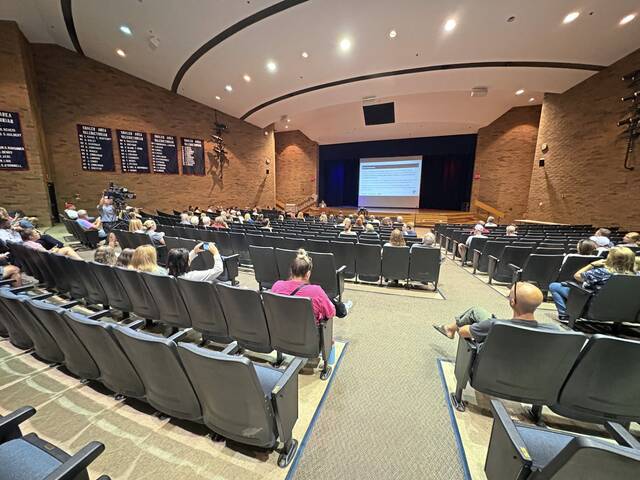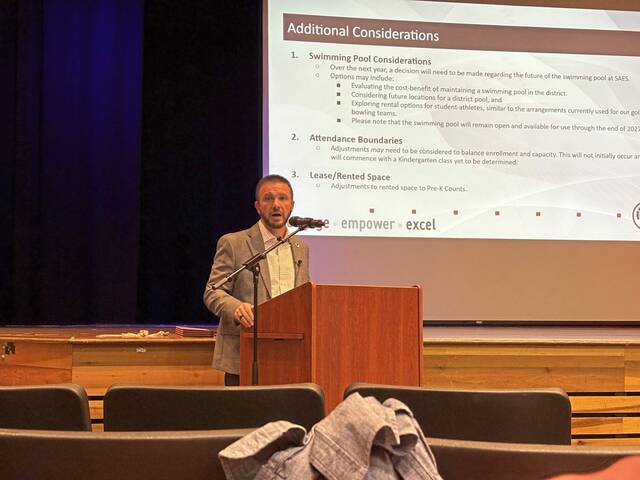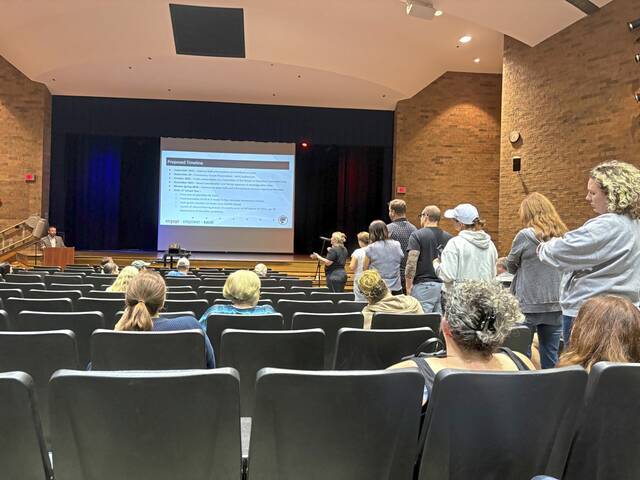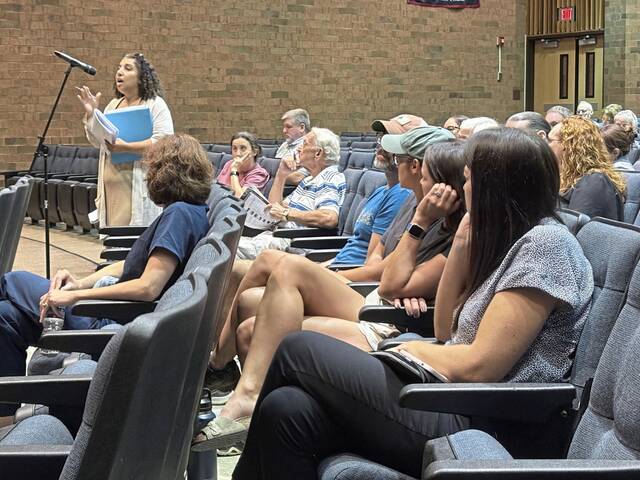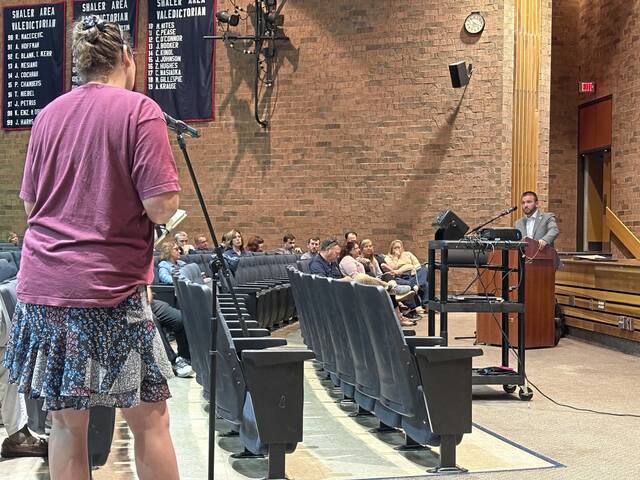Shaler Area parents, residents pose questions, offer opinions on proposed reconfiguration
A proposed reconfiguration of the Shaler Area School District built around closing its elementary school has been met with a mixture of public support and opposition, along with questions and concerns.
Superintendent Bryan O’Black took questions and comments from residents Monday at Shaler Area High School after giving a presentation on the “Building for Tomorrow” plan.
“This is the biggest thing in this school district since the merger,” said Ken Vybiral of Reserve, a candidate for school board in this year’s election.
The plan calls for closing Shaler Area Elementary School. Its fourth and fifth grade students would move to the district’s four primary schools, while sixth grade would move to the middle school.
The 2026-27 school year would be the last for the elementary school, with fourth grade staying at the primary schools and the elementary housing fifth and sixth grades. At the end of the 2026-27 school year, both grades would advance to the middle school.
The elementary school property would be sold for redevelopment.
A public presentation of the reconfiguration plan is scheduled for an Oct. 8 school board committee meeting. The board is then scheduled to vote on approving the plan on Nov. 19.
After Monday’s forum, O’Black said the plan “represents a bold step forward in shaping the future of education in the Shaler Area School District.
“The plan is grounded in what is educationally sound for our students — ensuring that every child has access to high-quality learning opportunities in environments designed to meet their needs,” he said. “At the same time, this initiative positions us to make strategic investments in our remaining schools so that we can modernize facilities, enhance safety and comfort, and provide up-to-date spaces that support 21st century learning.”
The reconfiguration plan does not call for reducing the teaching staff, and there is enough space available, O’Black said.
“You have space in your primary buildings whether you want to believe it or not,” said Reserve resident Kathryn Burks, who has children in second, fourth and seventh grades and remembers when her graduating class in 2007 was double the size of 2025. “This will work.”
The plan takes into account residents’ desires to keep the neighborhood primary schools open. Reserve residents were especially concerned their school could be closed.
Natalie O’Hara said the school is why she bought a home in Reserve.
“It’s a big focal point for the whole township,” she said. “It’s a small school, but it has a big heart.”
O’Black said the process dates to 2022 and studies of district facilities and enrollment trends. The district has lost about 2,000 students since 2016, falling from about 5,800 students in 2016 to about 3,800 now.
Some residents complained that the district was moving too quickly and there was a lack of information and details.
“They haven’t given us any information,” said Tas Howard of Shaler, who has sons in third and sixth grades and came to Monday’s meeting with a petition to keep the elementary school open. “It seems very rushed, and I don’t know why.”
The loss of activities and opportunities now offered at the elementary school, and whether or not they can all be made available at the four reconfigured K-5 elementary schools, was a concern for some parents.
Christina Hough of Shaler has a child in third grade at Marzolf and likes that they could spend two more years there. But with offerings at the primary schools varying drastically, she said the district must ensure students get the same opportunities at all of the K-5 schools.
“It doesn’t happen now all the time,” she said.
Julie Warnock of Shaler is concerned her daughter in third grade at Marzolf won’t get the same activities and opportunities her son, now in seventh grade, did when he was at the elementary school. She said she understands something has to be done but asked if it could be delayed a year.
“Does it have to happen so quickly?” she said. “The timeline just seems so quick.”
Financial considerations are partly driving the plan, O’Black said. Just keeping the school running the next couple of years would cost $500,000 to $5 million, while bringing it up to date would cost $30 million, he said.
Repairing its parking lot and sidewalks is expected to cost $2.5 million.
Closing the school will save the district about $500,000 annually in utilities, O’Black said.
Selling the 22-acre property would allow Shaler Area to invest in its remaining schools, while adding to the tax base, he said.
“We do not have a lot of land in any of our municipalities for development,” O’Black said.
But some residents are concerned about the loss of that land and the swimming pool housed in the building, both of which residents say are heavily used by the community as well as students.
Getting rid of the pool would be a disservice to the community, said Mary Beth Stoddart of Shaler. Pleading that it not be sold, she suggested the land become a recreation center, with the library moving there and a dog park.
“Leave it for the community because we all use it,” she said.
The pool was cited as needed not only for the swimming team but also for lessons, giving children a valuable skill to prevent drowning.
O’Black said it is unusual for an elementary school to have a pool, and swimming is not a state requirement. Before it was an elementary school, Shaler Area Elementary was a junior high.
A new pool would cost more than the district can afford, and the buildings take priority, O’Black said. The pool would remain open through 2027, and O’Black said administrators are looking for nearby pools the team can use.
Attendance boundaries for the four K-5 elementary schools would not be changed at the same time as the reconfiguration, O’Black said. That would be looked at in the future, beginning with a chosen kindergarten class.
Brian C. Rittmeyer, a Pittsburgh native and graduate of Penn State University's Schreyer Honors College, has been with the Trib since December 2000. He can be reached at brittmeyer@triblive.com.
Remove the ads from your TribLIVE reading experience but still support the journalists who create the content with TribLIVE Ad-Free.

